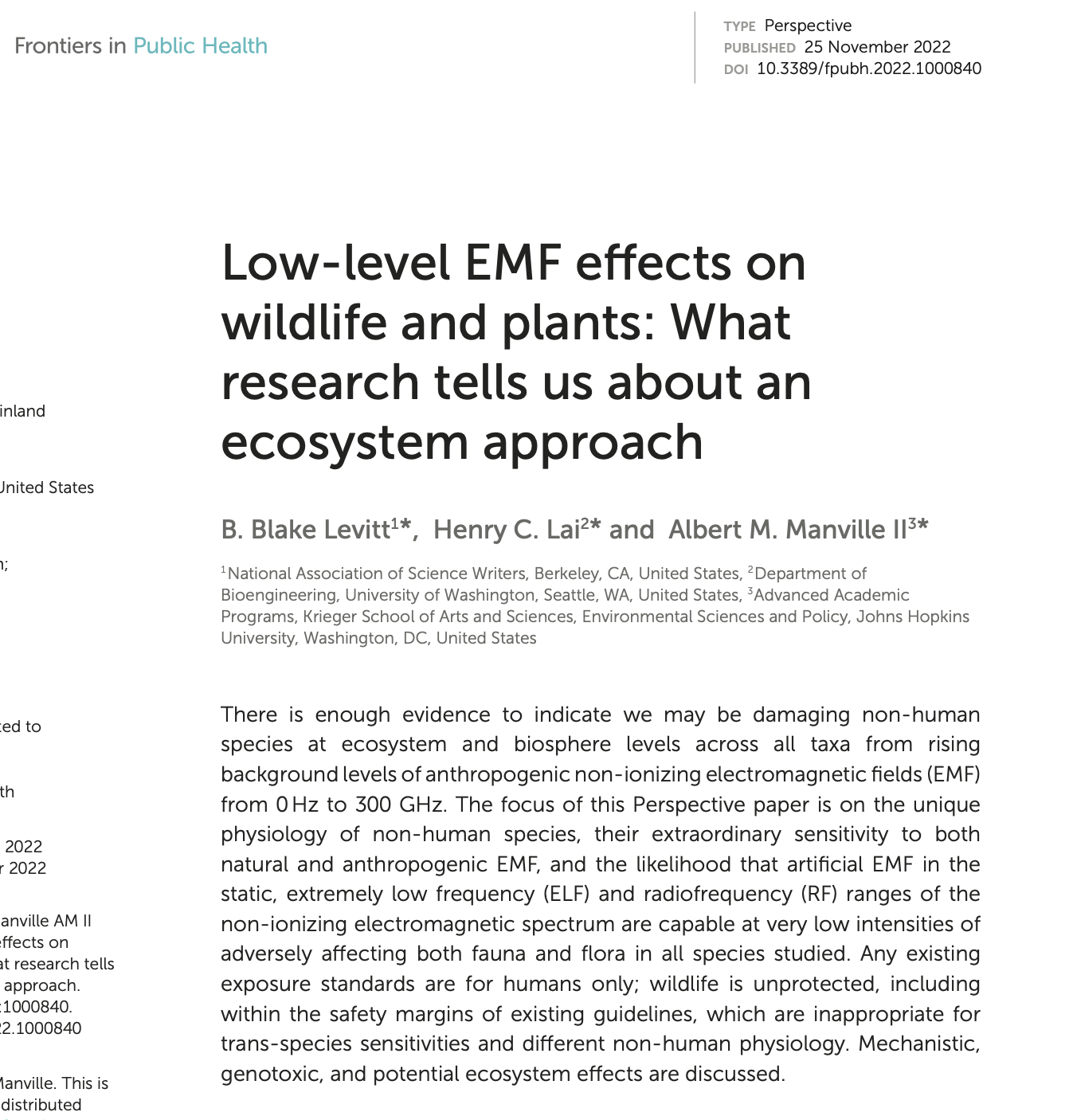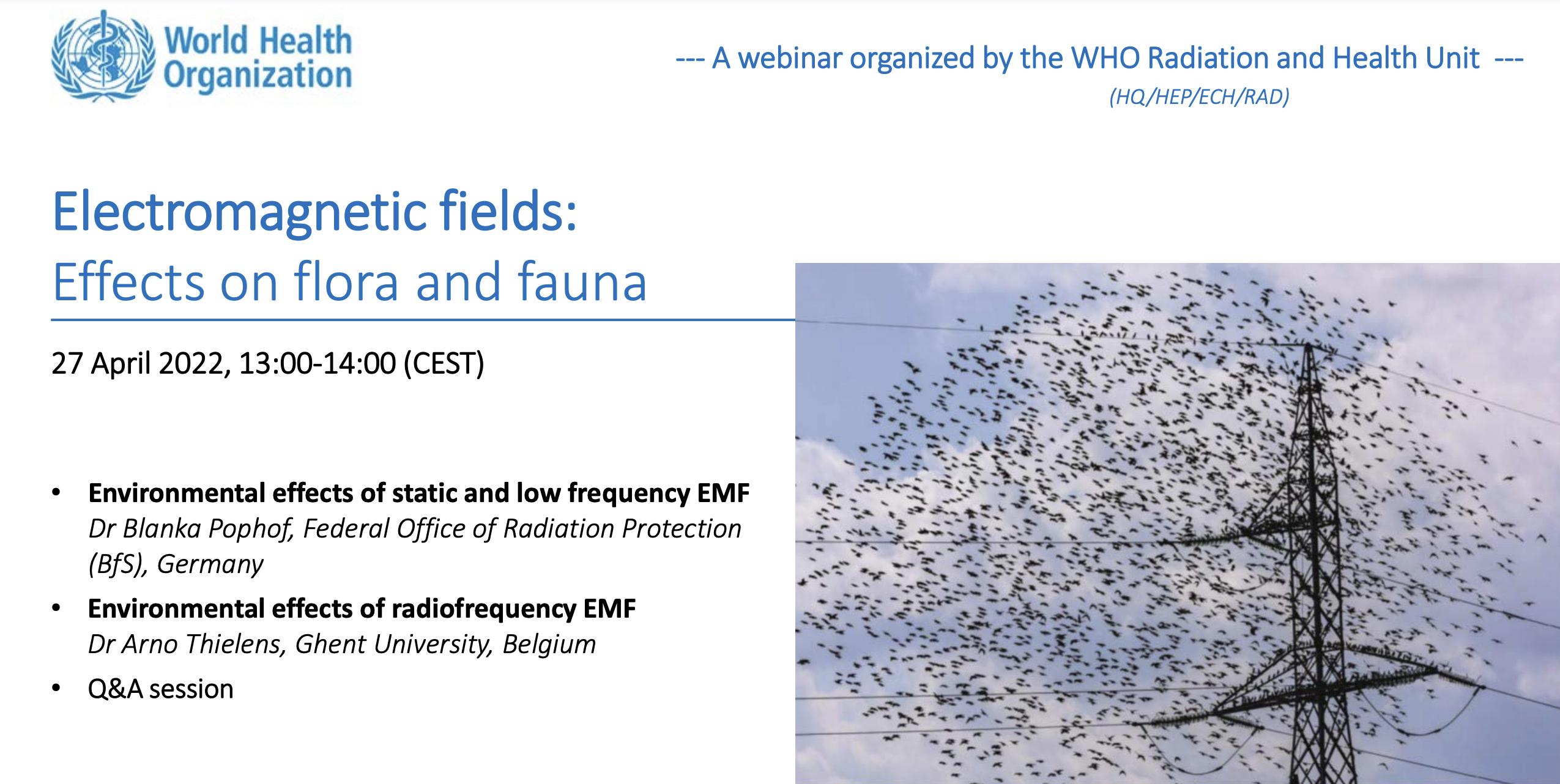NIER Effects on Flora & Fauna:
A Major Review
Runs over 200 Pages and Includes More Than 1,000 References
WHO Webinar on ELF EMF and RF Effects on F&F
A detailed examination —likely the most exhaustive ever attempted— of the environmental effects of non-ionizing radiation has been published in Reviews on Environmental Health.
“Effects of Non-Ionizing Electromagnetic Fields on Flora and Fauna” is in three parts, the last of which was posted today. They are:
- Part 1. Rising Ambient EMF Levels in the Environment
- Part 2. Impacts: How Species Interact with Natural and Man-Made EMF
- Part 3. Exposure Standards, Public Policy, Laws, and Future Directions
Taken together, the three papers run over 200 pages in the journal and include more than 1,000 references.
The authors are Blake Levitt, Henry Lai and Albert Manville. Levitt is a science journalist, based in Connecticut, and the author of Electromagnetic Fields: A Consumer's Guide to the Issues and How To Protect Ourselves, first published in 1995. Lai is a professor emeritus at the University of Washington, Seattle. In the 1990s, he and N.P. Singh were the first to show that ELF (60 Hz) EMFs and RF radiation could lead to DNA breaks. Manville is a lecturer at Johns Hopkins University in Baltimore and, formerly, a wildlife biologist with the U.S. Fish and Wildlife Service.
“We approached it from the biology/environmental ecosystem level, rather than the typical physics and/or human physiology side,” Levitt told Microwave News.
She added that they are planning to publish a book on the topic for the lay reader.
WHO Webinar: EMF Effects on Flora & Fauna
April 21, 2022
The World Health Organization (WHO) will host a webinar on April 27 on Electromagnetic Field Effects on Flora and Fauna. There is no charge for listening in, but you must register by April 26. The one-hour session will be recorded and made available to those who register.
The speakers will be Blanka Pophof of the German Federal of Radiation Protection (BfS) and Arno Thielens of Ghent University in Belgium.
May 2, 2022
A video recording of the one-hour webinar has now been posted. Go to:
http://bit.ly/39yaFzt
and use passcode:
6Fn#pDVS.
A transcript is also available.
Fourth Paper by Levitt, Lai and Manville
November 25, 2022
Today, Levitt, Lai and Manville published a new paper (their fourth) of EMF/RF effects on wildlife and plants in Frontiers of Public Health.
They write: “Long-term chronic low-level EMF exposure guidelines, which do not now exist, should be set for wildlife... We have a long overdue obligation to consider potential consequences to other species... The evidence requiring action is clear.”
This new paper is open access. Here’s the abstract:


